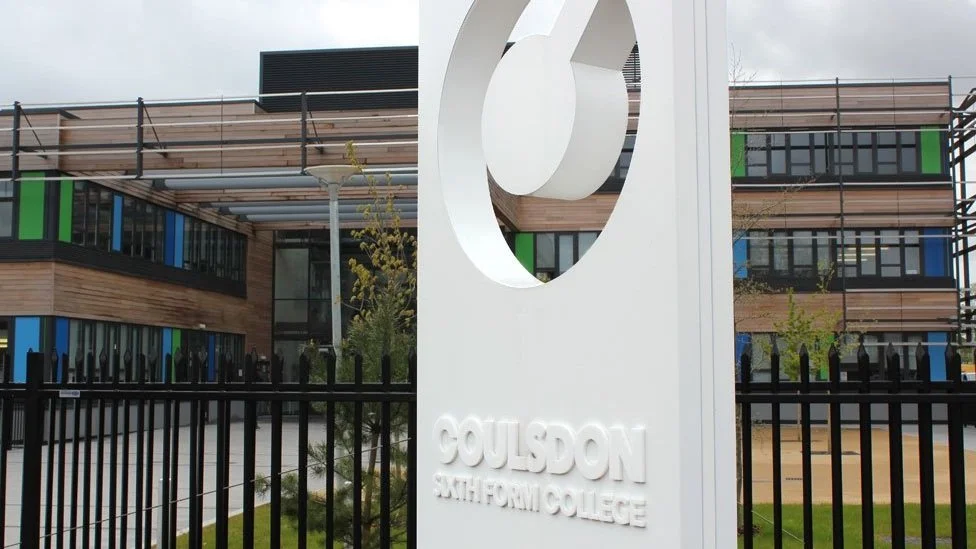MINIMISING DISRUPTION IN EDUCATION CONSTRUCTION
Construction within active educational environments presents unique challenges that require careful consideration. Schools and colleges must continue their daily operations without compromising either safety or the learning experience. This means minimising noise, ensuring safe access, and maintaining clear communication with all stakeholders. With the right strategies in place, construction can be carried out efficiently while causing minimal disruption to students and staff.
In this article, I will discuss some key areas to minimise disruption in educational construction, providing practical strategies that can help ensure a smooth and safe construction process while allowing schools to function effectively.
Early Planning and Collaboration
Successful projects start with thorough planning and open collaboration between contractors, school leadership, and other key stakeholders. One of the first steps is to assess the project's scope and determine how it might impact daily school activities. This includes identifying high-traffic areas, essential facilities, and key learning spaces that must remain accessible. By taking academic calendars into account, construction work can be scheduled around school breaks whenever possible, allowing for the most disruptive work to be completed while students are off-campus.
For larger projects that extend beyond holiday periods, a phased construction approach can be implemented. This involves dividing the project into manageable sections, allowing the school to remain operational while work progresses in a controlled manner. When rerouting pedestrian traffic or temporarily closing areas, it is crucial to provide clear signage and alternative access points to minimise confusion and maintain safety.
Prioritising Safety for Students and Staff
The safety of students, teachers, and school personnel should always be the top priority during construction projects. Construction sites must be properly enclosed to prevent unauthorised access, with clear demarcation and warning signs to keep staff and students at a safe distance. In some cases, temporary structures such as hoardings, protective tunnels, or enclosed scaffolding can provide additional safety barriers while also helping to contain noise and dust.
Regular safety briefings and updates should be provided to the school community to ensure everyone is aware of restricted areas and any changes to access routes. Construction workers should also undergo specialised training to ensure they adhere to strict safety guidelines while working within an educational setting. Fire safety measures should be incorporated into site planning, ensuring that all escape routes remain accessible and that emergency procedures are well-communicated.
Minimising Noise and Disruptions
One of the most common challenges in school construction projects is controlling noise levels. Learning environments require quiet conditions to facilitate concentration and effective teaching, making excessive construction noise a significant concern. To minimise disruptions, contractors can schedule noisy activities, such as drilling or demolition, outside of school hours - either early in the morning, late in the afternoon, or on weekends. Where possible, quieter construction methods and equipment should be used to reduce disturbances further.
In situations where construction must take place near classrooms or exam halls, noise barriers and acoustic hoardings can help absorb sound. Transparent communication with educators is also crucial; informing teachers about scheduled noisy work allows them to plan lessons accordingly, potentially relocating classes if necessary.
Efficient Site Management and Space Utilisation
When working in confined school environments, effective space management is critical to ensure construction areas do not unnecessarily impede daily activities. Using compact, well-organised site layouts helps reduce the footprint of construction zones, keeping pathways, classrooms, and communal spaces accessible. Temporary enclosures can be installed to fully isolate work areas from students and staff while also reducing dust and noise.
Additionally, incorporating visual engagement features, such as observation windows in hoardings, can turn construction projects into learning opportunities for students, allowing them to witness the building process safely. Maintaining clear and direct communication with school leadership ensures that space constraints are addressed proactively, minimising disruptions to movement around the campus.
Phased Construction and Holiday Scheduling
To further reduce disruption, educational institutions should prioritise construction work during school holidays whenever feasible. By carrying out the most intrusive and time-consuming phases of a project while students are off-site, the impact on day-to-day activities is greatly minimised. However, for projects that must continue through term time, it is important to implement a phased approach, where only specific areas are worked on at any given time.
This approach enables schools to remain operational while ensuring that classrooms, hallways, and communal areas remain accessible. For particularly sensitive projects, schools and contractors can collaborate to create a strategic timeline that aligns with key academic periods, such as avoiding disruptive work during exam periods.
Clear Communication and Transparency
Transparent and regular communication with all stakeholders is essential for maintaining a positive working relationship between schools and contractors. Weekly meetings with school administrators, project managers, and site supervisors help keep all parties informed about progress, upcoming work, and potential challenges. On-site notice boards displaying clear updates about the project’s status, safety information, and planned activities ensure that staff and students remain well-informed.
Schools should also provide parents with periodic updates, such as newsletters or emails, to reassure them that all necessary safety measures are in place. Establishing an open channel of communication allows concerns to be addressed promptly, fostering a cooperative environment throughout the construction process.
Compliance with Regulations and Best Practices
Ensuring compliance with health and safety regulations is non-negotiable when working in an educational environment. Contractors must adhere to legislation such as the Construction (Design and Management) Regulations 2015, which mandates safe planning and execution of construction activities. Other key regulations include the Health and Safety at Work Act 1974 and the Control of Asbestos Regulations 2012, which are particularly relevant when dealing with older school buildings.
Fire safety standards, such as those outlined in Building Bulletin 100 (BB100), must be strictly adhered to in order to ensure schools remain compliant. Environmental considerations, such as air quality assessments conducted before and after construction, should also be incorporated into the planning process. The use of dust extraction systems and plastic sheeting can help contain airborne particles, ensuring that learning environments remain safe and comfortable throughout the project.
Innovative Approaches for Faster, Less Disruptive Builds
Advancements in construction methods and technology can play a crucial role in reducing disruption and improving efficiency. Off-site prefabrication is one such approach, where key building components such as classrooms, walls, or bathroom pods, are manufactured in a controlled environment and then transported to the site for quick assembly. This significantly reduces the amount of on-site work required, minimising noise and delays.
Conclusion
Minimising disruption during education construction projects requires a combination of strategic planning, clear communication, and modern construction techniques. By prioritising safety, scheduling work effectively, and leveraging innovative building methods, schools can successfully upgrade their facilities while maintaining normal operations. For educational institutions and facility managers preparing for construction projects, implementing these best practices will help create a smoother, safer, and more efficient building process, ultimately benefiting both students and staff.
If your institution is planning a construction project, now is the time to start preparing for a smooth and disruption-free process. Prioritising early planning, safety, and clear communication will help maintain a productive learning environment while upgrading your facilities. Whether you’re looking for guidance, innovative construction solutions, or expert support, don’t hesitate to reach out to Ash Technical Construction. Taking the right steps now will ensure your project is completed efficiently, safely, and with minimal impact on students and staff.




